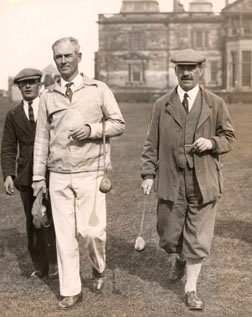Opinion
It seems for as long as golf has been played, its tools, ie. sticks and balls, have come under scrutiny. Improvement is always paramount in the golfer’s mind. So it is with the providers of the tools. How to make them better? The long evolution in the club has brought it from rude clubs to highly wrought miracles of space-age metal. As for the ball, it likely transitioned from pebbles to round wooden balls, to leather stuffed with feathers, to molded gutta percha, to the rubber core and finally to whatever the heck is in the things today. From what I can determine, no one at any particular period has ever been entirely satisfied with the balls available at that time. They were too light, too heavy, too big, too small, too hard, not hard enough, they floated, they didn’t float… It’s the nature of the game, the pursuit of perfection and the impossibilty of attaining it.
The current Wee Nip offered a bit of discussion on the modern efforts to produce a playable ball for events that approximate pre-1900 play. I say “approximate” for, unless you find some hobnailed golfing shoes, dress in wool with vests, find courses with rough grass fairways, etc. it’s all just an approximation. We will never exactly reproduce that game. The modern balls used for pre-1900 play are produced, at least in the McIntrye effort, with some thought and study. I do not know what thought goes into the NHC ball. Back in the day, there were several makers of gutta balls. And these many offerings came in their several weights, sizes, surface treatments, etc. Unless several more modern gutty makers spring up, the balls we can find are the ones we have to play with. And who knows but that the future will present a variety of gutties from which to choose.
Anyway, in researching articles written back in the day about the gutty, I came across the two that are attached here in PDF format. I thought our fellow SoHG members, and those golfers who enjoy gutty play, might enjoy reading them for their perspective on the ball back in the day. Plus, one is from that finest of golf writers, Bernard Darwin. The other is by Max Behr, no slouch in his own right as an author and golf course designer.
Most of you will be familiar with Darwin, perhaps not as much with Behr, so I’ve added a brief bio of this remarkable man.
Behr was born in New York City and attended the Lawrenceville School in New Jersey. His relatives were among the founders of St. Andrew’s Golf Club in Yonkers, N.Y. He played golf for Yale (from where he was graduated in 1905) and was club champion at Morristown CC and at Somerset Hills CC in Far Hills, N.J. In 1914, Behr became editor of Golf Illustrated, which lasted until the Depression. He moved to California in the 1920s and began designing golf courses, beginning with Hacienda Golf Club in 1922 and ending with Rancho Santa Fe GC in 1927. He didn’t believe in rough on courses, preferring instead “to use natural terrain and bunkers to defend [his] greens from every conceivable angle.” He remodeled Victoria Club in 1923, Brentwood CC two years later, and in 1926 was a consultant on the remodeling of The Olympic Club’s Lake Course in San Francisco. Interestingly, Behr developed his own religion based on numbers (not numerology) and continued to write books and articles well into his 60s.

strolling along the first fairway of the Old Course
with Dr. Alister MacKenzie.

